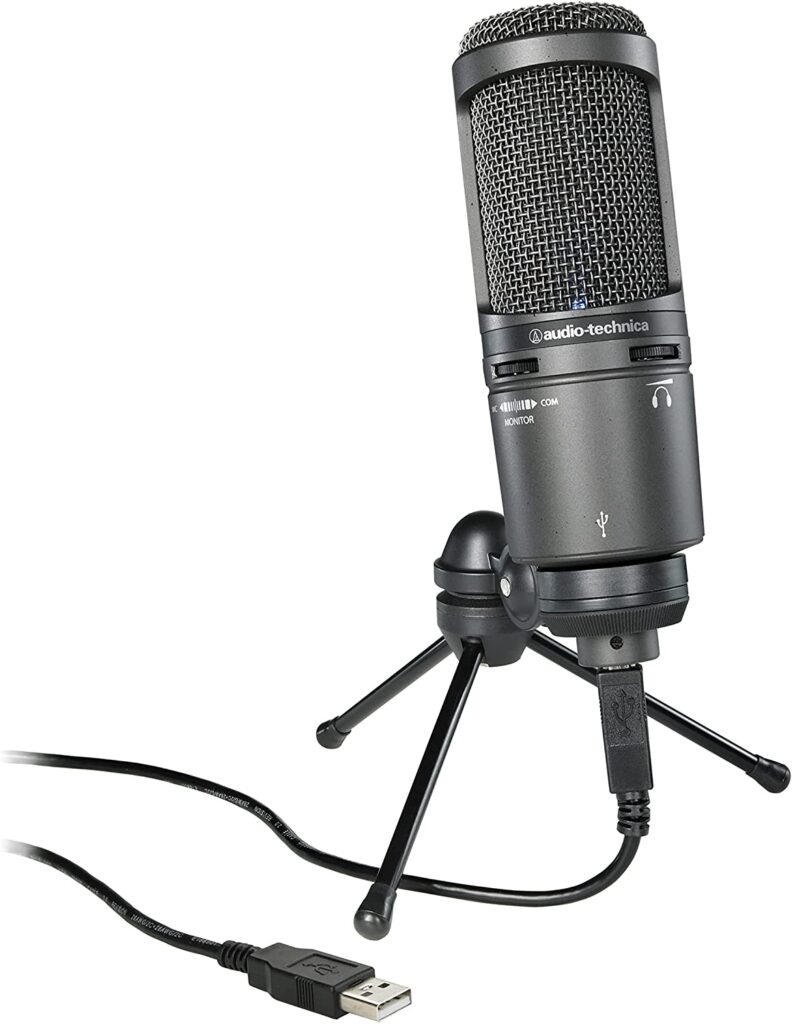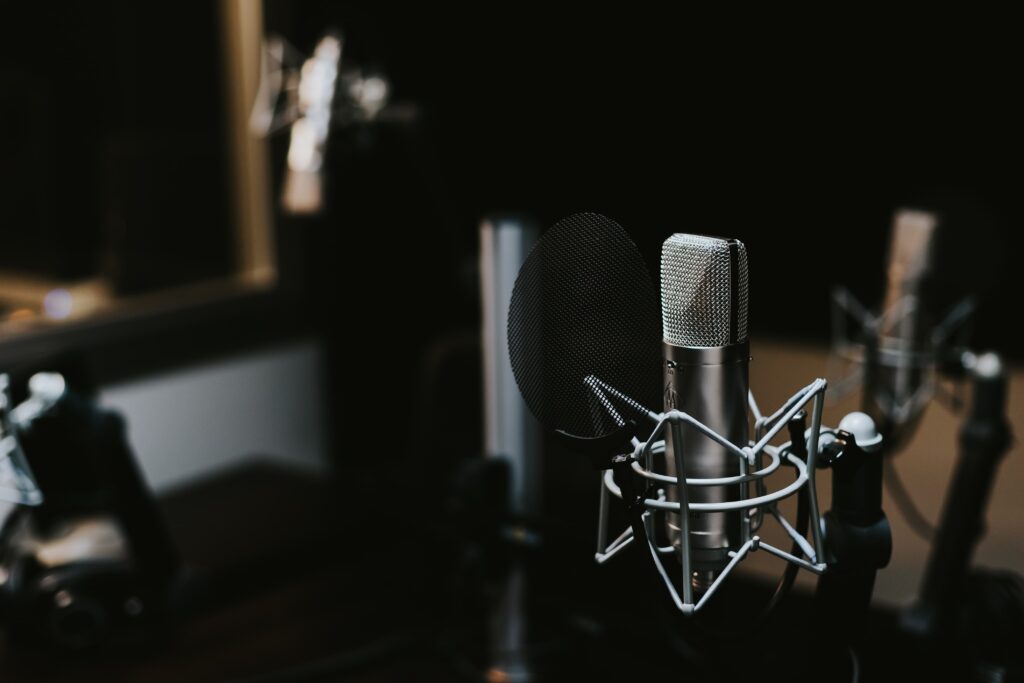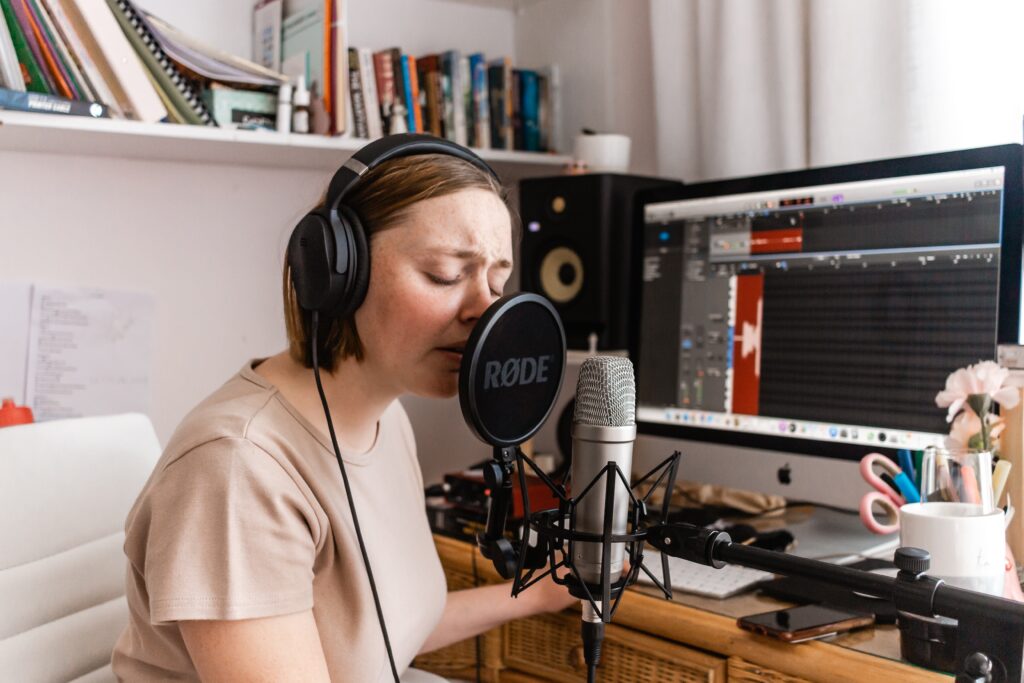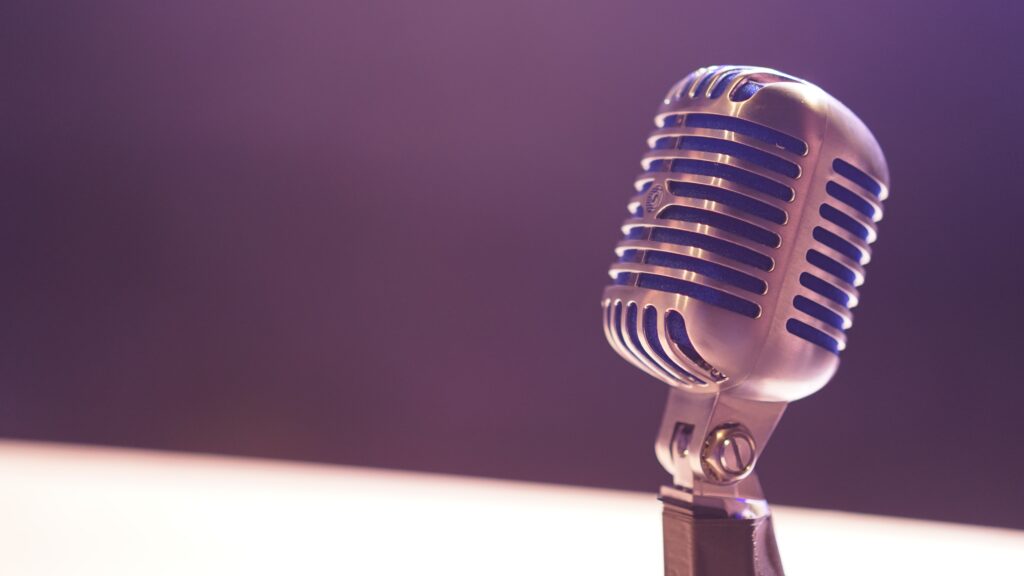The USB condenser microphone is a digital microphone that connects to a computer or other device through a USB interface. These microphones are popular because they are easy to use and make it easy to record sound.
The first USB microphones appeared in the late 1990s, after the USB (Universal Serial Bus) standard was proposed. An early microphone’s primary application was with audio-intensive computer systems like voice recognition software.
As technology improved and more people wanted to record digital audio, USB microphones became more popular for podcasting, music recording, and streaming.
Today, USB microphones come in many shapes, sizes, and prices, and both professionals and beginners use them. Blue, Rode, and Shure are three of the most well-known brands of USB microphones.
What is a USB condenser microphone?
A USB condenser microphone sends a digital signal and uses a USB interface to connect to a computer or other device. This type of microphone uses a thin, bendable diaphragm suspended in front of a stationary metal diaphragm to pick up sound (called a backplate). When sound waves cause the diaphragm to move, it sends out an electrical signal that is converted into a digital audio signal by the microphone’s internal converter.
USB condenser mics are popular because they are easy to carry around and use. You don’t need an audio interface to connect these microphones to a computer or other device because you can use a USB cable. Mics often record audio for music, podcasts, live streaming, and voiceovers, among many other things. Some USB condenser microphones have built-in preamps, onboard digital processing, and different pickup patterns that let the user control the microphone’s output to suit their needs.
Types of a USB condenser microphones
There are different kinds of USB condenser microphones on the market, each with its features and traits. There are many different kinds of USB condenser microphones.
- Desktop microphones are USB condenser microphones that sit on a desk or other flat surfaces. They are often used for podcasting, streaming, and voiceover work.
- Handheld microphones are USB condenser microphones that you can hold in your hand. They are often used for live performances, recording instruments, or singing.
- Clip-on microphones are USB condenser microphones with a clip that can be attached to clothes or other things. They are commonly used in interviews and other situations where a microphone needs to be close to the speaker’s mouth.
- Boundary microphones are USB condenser microphones meant to be put on a flat surface, like a table or podium. They are often used for conference calls, meetings, and other situations where a microphone needs to pick up sound from a large area.
- Headset microphones are USB condenser microphones that are made to be worn on the head, usually with headphones. People often use them to play games, stream videos, or talk on the phone.
- Lavalier microphones are small USB condenser microphones meant to be worn on the body, usually attached to clothing. They are often used in interviews, presentations, and other situations where a microphone needs to be close to the speaker’s mouth without getting in the way.
Features of a USB condenser microphone
A USB condenser microphone is a type of microphone that connects to a computer or other device through a USB (Universal Serial Bus) port. It is made to work with a computer or other digital audio device, and most of the time, you don’t need any extra hardware or software to use it. Some of the most common characteristics of USB condenser microphones are:
- Plug-and-play connectivity: Most USB condenser microphones are made to be easy to use. They can be used with any USB port device because they have plug-and-play connectivity.
- Built-in preamp: Many condenser USB microphones have a preamp that boosts the microphone’s signal before turning it into a digital signal. It can increase the microphone’s movement and improve the audio’s overall quality.
- Adjustable gain: Many microphones USB condenser have a control that lets the user change the microphone’s sensitivity. It can help you adjust the sensitivity of the microphone to match the volume of the recorded source.
- Polar patterns: USB condenser microphones can have different polar patterns, which describe how the microphone picks up sound. Some of the most common polar patterns for USB condenser microphones are cardioid, omnidirectional, and figure-8.
- Compatibility with software: Some USB condenser Carbon microphones come with software that lets the user change the microphone settings and how the sound comes out. Other microphones might work with software from a third party, like recording or audio editing programs.
- Durability: Most USB condenser microphones are built to last and can handle many uses. Some models may have a shock mount or built-in pop filter to reduce handling noise and keep the microphone from getting damaged.
Conclusion
USB condenser mics are a quick and easy way to record or transmit audio. They have simple controls and plug-and-play connections, which makes them great for people who are just starting or want to save time. They may sound better than professional-grade mics, but they’re less expandable. They need a USB port and may be noisier than regular microphones. It depends on your demands and budget.




